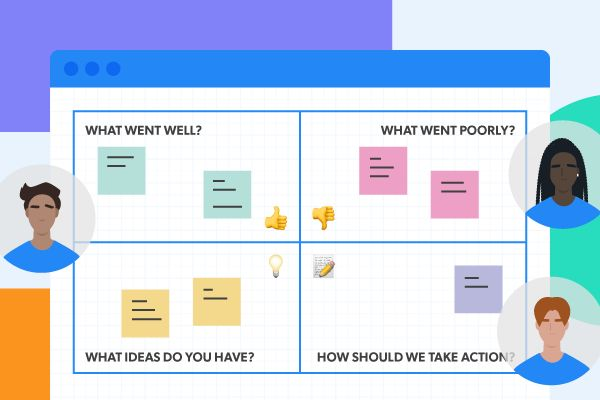Agile Restrospective Meetings
What is Retrospective Meeting?
This is the final meeting of the sprint, where the team will discuss what went well and what did not go as expected. By evaluating these aspects, the team can identify lessons learned and improve their performance in future sprints by understanding the flaws encountered. This meeting provides an excellent opportunity for the entire team to focus on overall performance and to identify strategies for improving their processes.
Purpose of Retrospective Meeting
Retrospective meetings will be held to reflect on the most recent sprint or milestone, identify areas for improvement, and celebrate the team's successes.
This will provide a clear overview of the areas that need improvement and where the team should focus in the next sprint. The Scrum Master will ensure that the event occurs and that all participants understand its purpose.
Roles and Participation
In a Retrospective Meeting, the entire Scrum team participates, including the Product Owner, Scrum Master, and Development Team. The Scrum Master facilitates the meeting, guiding the discussion and ensuring that everyone has a chance to speak. The Product Owner provides insights into product-related aspects, while the Development Team shares their experiences and challenges. Active participation from all members is crucial for a comprehensive evaluation of the Sprint.
What team discusses in Retrospective Meeting
During the Sprint Retrospective Meeting, the team would discuss on -
- What went well?
- What went poorly?
- What actions we should take?
- What ideas do we have?

The Scrum Master encourages the team to enhance their development processes and practices to increase effectiveness in the next sprint. During each Retrospective meeting, the Scrum team identifies strategies to improve work processes and, consequently, the quality of the product.
Retrospective Meeting steps
A typical Retrospective Meeting follows a structured format to ensure productive discussions:
- Set the Stage: Create a comfortable environment where team members feel safe to share their thoughts.
- Gather Data: Collect information about what happened during the Sprint, including successes and challenges.
- Generate Insights: Analyze the collected data to understand underlying causes of issues and identify patterns.
- Decide What to Do: Determine actionable steps to address problems and enhance processes.
- Close the Retrospective: Summarize the meeting, express appreciations, and confirm the action items for the next Sprint.
